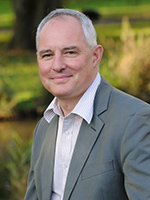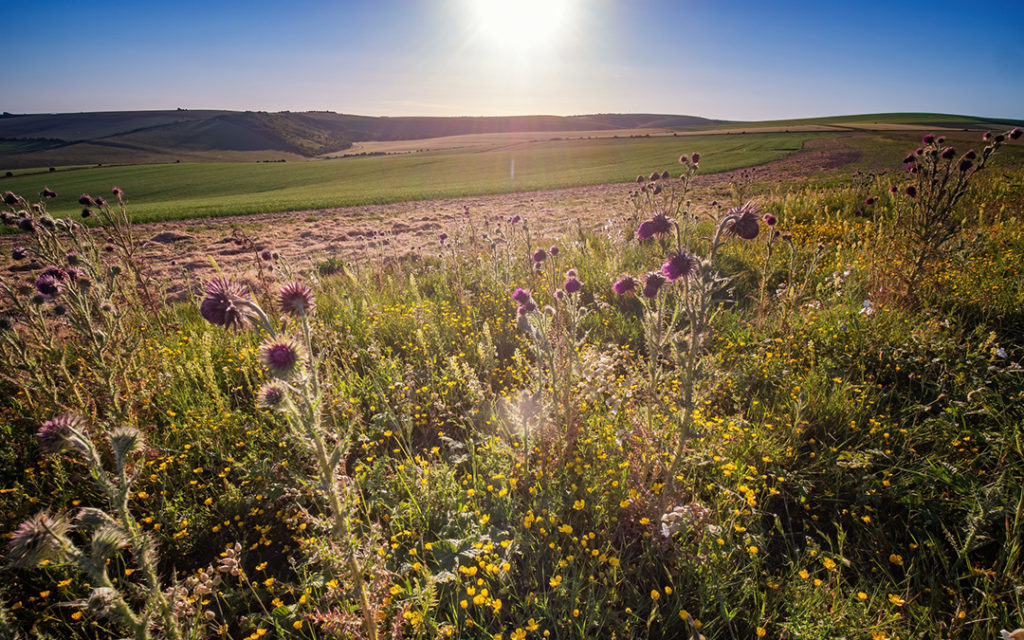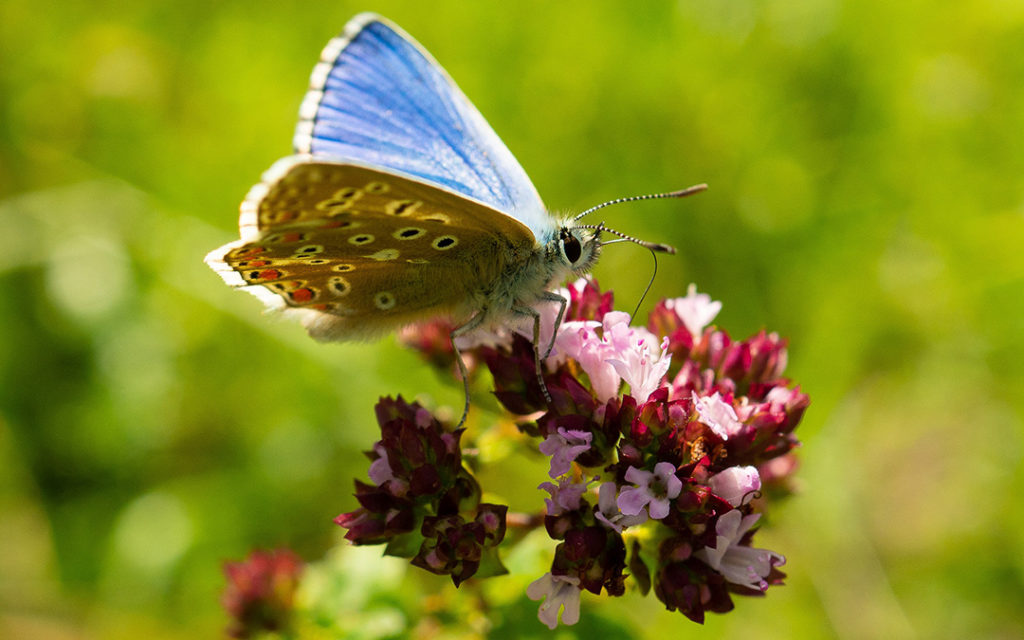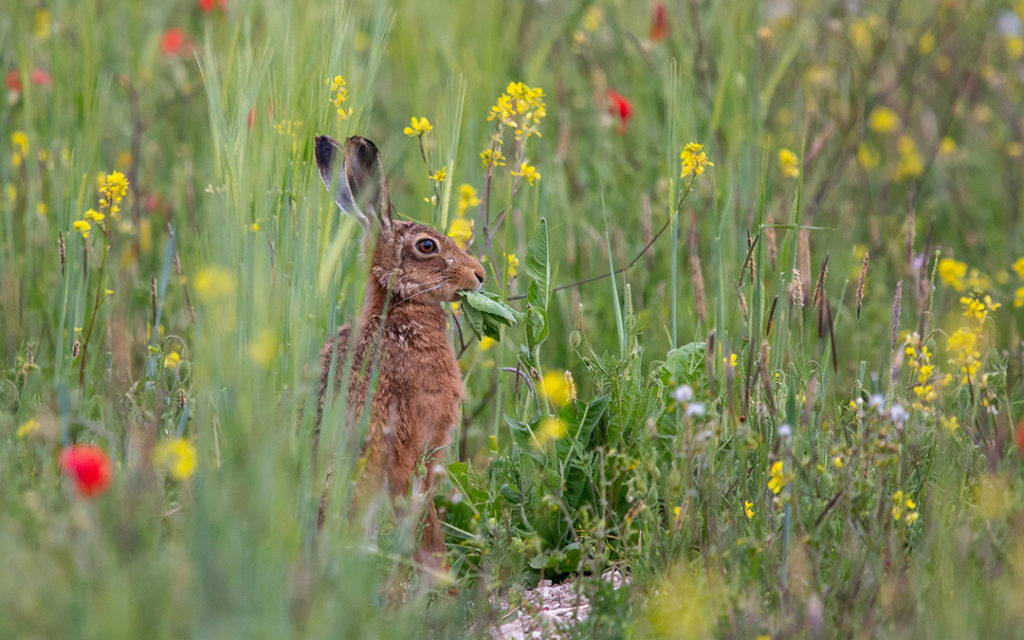An inspiring campaign launches today to “renature” the South Downs National Park and create new havens for wildlife to flourish.
In the biggest initiative ever launched by the National Park, the #ReNature campaign is looking to raise £100m over the next 10 years to create an extra 13,000 hectares – or around 21,000 football pitches – of habitat where plants and animals can thrive.
These ambitious plans would mean an area over three times the size of Portsmouth City (40km2), almost double the size of Southampton City (72.8km2), over a third again bigger than Brighton and Hove (87.5km2) and over six times the size of the City of Westminster in London (21.45km2), managed for nature.
A beautiful and emotive film, “The Night We ReNatured”, has been launched to kickstart the initiative, telling the story of a young girl who dreams of nature rekindling in our countryside, villages, towns and cities as people work together to create a home for wildlife. The film is set to be shown this month on cinema screens across the region.
The South Downs, Britain’s newest National Park and the third biggest in England, currently has 25 per cent of the land managed for nature, such as nature reserves, woods, heaths, ponds and flower-rich road verges. The additional 13,000 hectares would bring this to 33 per cent of land managed for nature – going beyond current UN-backed conservation targets of “30 per cent by 2030” (30 for 30).
But the National Park also wants to go one step further – ensuring that the remaining 67 per cent is nature-friendly by 2030.
ReNature is being spearheaded by the South Downs National Park Authority and the South Downs National Park Trust, the official independent charity of the National Park, working with a range of partners.
It comes as national statistics show nature is in crisis everywhere. The latest national State of Nature report showed revealed that 41 per cent of UK species studied have declined, and some 133 species assessed have already been lost from British shores since 1500. Around a quarter of the UK’s mammals could also be at risk of disappearing altogether. Climate change, pollution and habitat loss are among the causing factors.

“The biodiversity crisis is real and it’s happening before our eyes, but the good news is it’s not too late to turn the tide of wildlife loss. Nature can thrive anywhere given the right support and we can all work together to make a real difference.
“Located in the busiest part of the UK in the South East, the South Downs National Park has a crucial role to play to lead nature recovery and be the hub of an interconnected ‘nature network’ for the entire region.
“Nature needs us now and we also need nature, perhaps now more than ever before in this post-pandemic world where green spaces have taken on a new level of importance. Apart from being incredibly beautiful and part of our shared appreciation for Planet Earth, nature gives us everything – whether it be clean water, fresh air or food to eat. We’re launching this campaign without a moment to lose because it’s time for all of us to help nature to renature.”
The National Park already has some amazing biodiversity – including over 20 species of butterfly being found in just one square metre of chalk grassland and some heaths having all 12 native reptile and amphibian species. But, even here in the South Downs, nature is struggling and needs our help.
Andrew explained:
“The crux of this initiative is that we want nature everywhere for everyone. Nature recovery in the South Downs National Park is not one big ‘rewilding’ project – it will be achieved through lots of different projects, both large and small, that together will create nature recovery.
“Our goal will be achieved by working with our farmers, land managers, communities and local authorities, as well as other partners and environmental charities. It will include everything from hedgerow restoration, to planting thousands of trees, to the restoration of individual village ponds, to planting new wildflower corridors.
“Nature recovery is about a National Park that is better for wildlife and people, that will also restore, conserve and enhance the magnificent and varied landscapes that make the South Downs so special.”
Individuals, communities, businesses and funders are now being encouraged to help with the fundraising.
Julie Fawcett, Chair of the South Downs National Park Trust, said:
“We know we’re aiming big with our fundraising target, but nature desperately needs our help. As a charity, we hope to raise the funds over the next decade in a variety of ways, including donations, grants, public funds and private finance.
“We really want this campaign to capture people’s imaginations about the beauty of nature and the important role we can all play in giving it a helping hand.
“Whether it be making a donation, putting up a bird box in your garden or planting a tree at your school, everyone can help nature.”
To donate to the South Downs National Park Trust’s appeal visit see:
For more information about the initiative visit:



